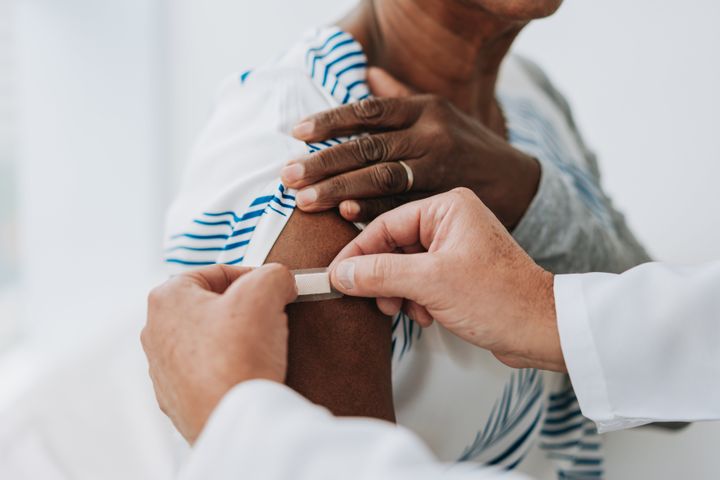
In unfortunate news, cases of COVID-19 are increasing just in time for the holidays.
Behind this uptick is a new strain called JN.1, which accounted for 21.4% of cases in the United States as of Dec. 9, according to data from the Centres for Disease Control and Prevention. JN.1 is a descendant of BA.2.86, which first emerged in late summer. Both are part of the omicron lineage.
The World Health Organisation has named JN.1 a “variant of interest,” but also noted that “the additional public health risk posed by JN.1 is currently evaluated as low at the global level.” In other words, don’t panic — but do know that with cases rising, you are more likely to get sick or be exposed to someone who is sick.
As we head into the busiest time of the year, it’s crucial that you’re aware of the symptoms that accompany COVID-19 infections right now. They’ve changed since the beginning of the pandemic.
“I think the good news is, most patients we’re seeing with COVID seem to have milder and upper respiratory symptoms,” said Dr. Jonathan D. Grein, the director of hospital epidemiology at Cedars-Sinai in Los Angeles.
Since people have immunity from infections and vaccination, symptoms are also becoming nonspecific, said Dr. Joe Khabbaza, a pulmonary and critical care physician at Cleveland Clinic. This makes it hard to distinguish COVID-19 from other viral illnesses, Khabbaza noted.
So what are the main red flags to watch for this winter? Below, doctors share the symptoms they’re seeing most this holiday season:
Many COVID symptoms today feel like cold symptoms.
Dr. Sarah Hochman, a hospital epidemiologist at NYU Langone Health and the section chief of infectious diseases at Tisch Hospital in New York, previously told HuffPost that most COVID-19 symptoms are similar to what you’d experience with a cold, which still remains true today. The most common signs are:
- Congestion.
- Runny nose.
- Sore throat.
- Dry cough.
- Headaches.
- Body aches.
- Fatigue.
- Fever.
Notably, the loss of taste and smell is less common. While it still can happen, it’s certainly not as frequent as it was in the beginning of the pandemic.
There is a healthy amount of overlap between COVID-19, influenza and respiratory syncytial virus, or RSV, “so sometimes it can be very difficult just based on symptoms alone to know what you might be infected with,” Grein previously told HuffPost. COVID-19 tests remain the best way to figure out if you’ve got the virus.
Shortness of breath and chest pain can still occur (and they need medical attention).
For people who do get very sick, worrisome symptoms like shortness of breath and chest pain would be a reason to seek medical help ASAP. Khabbaza said people with these symptoms are showing up more lately.
“The last several weeks, at least in my area, have seen more people end up in the ICU [intensive care unit] with COVID pneumonia than I can remember really in over a year and a half or so — we’re seeing that classic lung inflammation,” Khabbaza said. “Even though they’re ending up in the ICU, we’re seeing less ventilators used than the earlier strains.” He added that the number of people in the ICU is lower compared with earlier stages of the pandemic.
“People seem to gradually get better with supportive care, so their ICU stays have been shorter as well. That is something that we are noticing these last several weeks in our ICU,” Khabbaza said.
Those at risk for hospitalisation and severe disease are the folks who have been at the highest risk since the start of the pandemic: elderly people, people with medical conditions, folks on chemotherapy and other medications that can weaken the immune system, those getting treated for autoimmune diseases, and people who have had a transplant, Khabbaza said.

Vaccination is a way to reduce the severity of the illness.
A COVID-19 vaccine is still your best defence when it comes to protecting yourself. Updated shots are available to tackle circulating variants. The new vaccines are expected to protect against JN.1, too, according to the CDC. You can go to vaccines.gov to find a COVID-19 shot appointment near you.
You can also get the RSV vaccine, which is available for adults 60 and older and babies up to 8 months, and the flu shot, which is recommended for people 6 months of age and older. It is not too late in the season to get your vaccines.
If you do get COVID-19, you can start antiviral treatment to reduce the severity of your illness.
“Getting [the antiviral treatment] Paxlovid early ... when you’re symptomatic, or even just higher-risk of severe disease, can really make a big difference in the course of the illness and certainly minimise duration of symptoms, minimise severity of symptoms and, for those who are higher-risk really, for a lot of them, can keep them out of the hospital,” Khabbaza said.
We’re lucky that many people have built-up immunity from vaccination, infection or a combination of both, but Paxlovid is still an effective treatment for managing the severity of COVID-19, he said.
If you do get COVID-19, Paxlovid needs to be started within five days of symptoms, so let your doctor know ASAP if you test positive.
Finally, take action to stay healthy.
Basic hygiene that we’ve been practicing ― like hand-washing ― remains important. You should also consider wearing a mask in crowded spaces. And, most importantly, if you’re not feeling well, stay home. Protect others around you from getting sick.
A previous version of this story appeared in November 2023.